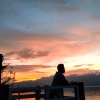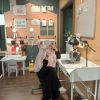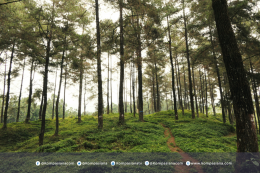As women fish sellers sit on their stools in the bustling port of Tegalsari in Tegal of Central Java, large steel basins between their legs and elegantly knotted turbans on their heads, some stare into the distance, towards a horizon that was once filled with more opportunity than it is now.
From time to time a fish seller bangs loudly on their steel, impatient for the day's catch to be offloaded from the wooden canoes. It is a noise heard from fish transport workers who used to work at Tegalsari fish port, a chorus that bemoans the shortage of fish in seas that have supported past generations of small-scale, traditional fishermen.
If there was once abundance here, it has gone.
North Sea of Java Island are some of the most overfished in Indonesia, with high levels of illegal and unreported fishing. The socioeconomic and ecological costs for local populations are huge and scientists warn of an imminent collapse in North Sea of Java fish stocks if measures are not taken to curb overfishing.
In Cental Java, as many as hundreds of trawl ships ussualy called as cantrang, are targeting the same fish that artisanal fishermen have been catching for generations. But they're also targeting juvenile fish, meaning populations cannot recover. Since 1980 there has actually been a prohibition, But still they operate trawlers until now, impacting the livelihoods of coastal fishing communities.
Why trawl is prohibited ?
Quoting from the WWF-Indonesia study, it is stated that only about 18-40 percent of trawl and cantrang catches are economically valuable and can be consumed, 60-82 percent are bycatch or discarded. So that most of the catch is dumped into the sea in a dead condition. The use of trawl by dredging the bottom of the water damages the habitat and the use of a small net also causes the capture of various types of biota that are still juvenile or immature gonads.
This waste of resources has been ongoing since this fishing gear, began to be widely used in the 1960s. Trawl and cantrang catches are not selective with catch composition that catches all sizes of fish, shrimp, crabs, and other biota. The Biota immature and not yet spawned that have been caught cannot produce new individuals. This condition causes depletion of stock or reduction in stock of fish resources, the catch will decrease, this is the first damaging impact.
Second, the removed biota will disrupt fishery data because it is not recorded as a result of fisheries production.Analysis of fisheries resource stock also becomes inaccurate, causing incompatible management policies and the reality of fisheries resource conditions. Operation of trawl and cantrang which dredges the bottom of deep and coastal waters without exception of coral reefs and damaging the location of spawning marine life. Although Cantrang avoids coral reefs, small groups of living corals at the bottom of the water will be swept away.
The third impact is disturbing and damaging the productivity and habitat of biota on the bottom of the water where the bottom of the water is an important habitat in the sea because it consists of coral reef ecosystems, seagrass, and sand or mud substrate.
Fourth, fish resources in the Java Sea waters have experienced degradation due to dense fishing activities from various regions including the use of trawl and cantrang fishing gear. Fishing ground (fishing location) fishermen will also move and stay away, and the operational costs of catching will be higher.










